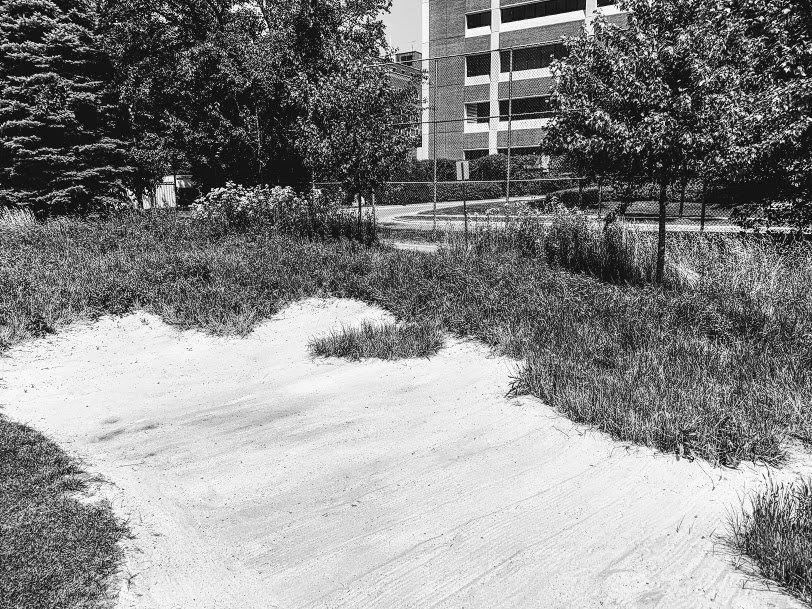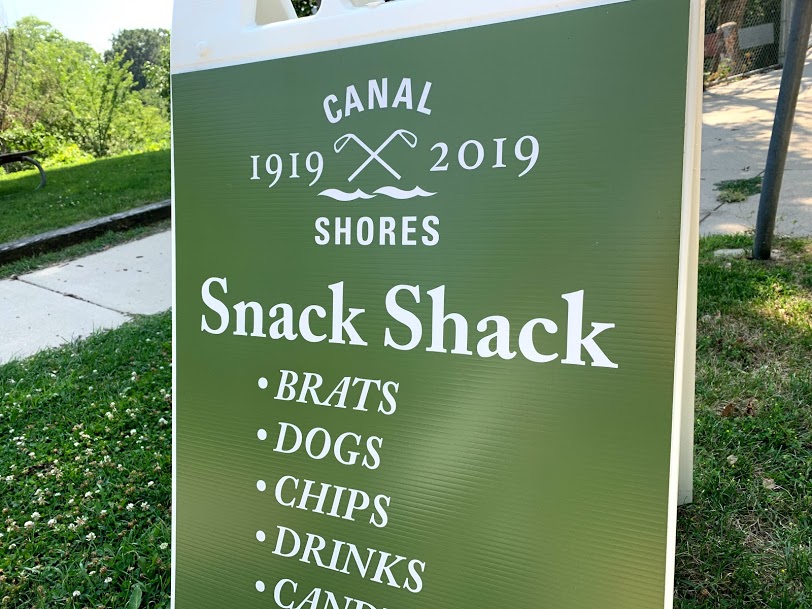Canal Shores Golf Course Review
Canal Shores Golf Course in Evanston, IL takes you on a community golf journey that every golfer should experience more than once.
Located steps away from the Purple Line of Chicago’s “El Train” transit sits Canal Shores Golf Course. The property’s address is listed in Evanston, IL — which would make sense, being a few blocks away from Northwestern University’s Ryan Field — but the course layout also intersects neighboring Wilmette on either side of the Chicago River. The par-60 routing is quaint, a mere 3612 yard from the back tees, but placing judgement on the course on those superficial elements alone would be a mistake.
Canal Shores Golf Course is a true celebration of the game in its purest form, offering you everything you need without anything you don’t. It is also one of the most unique golf courses I’ve ever played.
Canal Shores Golf Course offers 5- and 10-hole playing options in addition to the standard 18.
Community Golf at its Finest
You will cross six city streets while playing a full round at Canal Shores: Central, Isabella, Maple, Linden, and Colfax. There will be times when you have to wait at a four-way stop or hustle through an intersection to avoid oncoming traffic. You are literally playing golf in a neighborhood park, which sounds like any public golf course anywhere. However, that analogy takes on a different meaning here.
There were times during my round when I felt as if I was playing the game in someone’s back yard. Other times I imagined I was in a courtyard of a Marriott hotel complex, especially in the shadows cast by some of the largest homes I’ve ever seen. It was as if I had successfully snuck on to private property, often times waiting for a neighbor walking their dog to cross through the fairway.
At the risk of sounding redundant, the uniqueness of this course cannot be overstated. You are immediately hit with the notion that your first loop at Canal Shores will always be memorable during the walk from the second green to the third tee box. This requires the use of a street crosswalk after passing the entrance to the Central Street El train station on your right. In fact, a group of golfers — bags in tow — were seen entering the doors to the station after their round.
Canal Shores has a unique connection to its community, and vise versa.
As featured in the third issue of The Golfer’s Journal, this connection to the community has become vital to the course’s longevity. When recently faced with a very real possibility of closing, Canal Shores’ status as a non-profit allowed multiple fundraisers to which locals could contribute to keep the course alive. A link on their website still allows for donations, insinuating this is a fight that ebbs and flows with every passing year.
Artwork along the El train railway parallel to the third hole.
People continue to play, however. My afternoon round included multiple interactions with the community, whether it be the family of four on the practice putting green or a high-schooler receiving an impromptu bunker lesson from a staff member on the course’s eight hole. A fivesome of younger players teed off behind me, all wearing t-shirts and cargo shorts, undoubtedly using mixed bags of hand-me-down clubs or rentals from the pro shop. Laughter filled the air as friends heckled each other after a bad shot, instilling a comfort level often missed on more expensive courses.
On many occasions throughout the round families were seen playing in the grass, enjoying the humid summer day as one would expect. I got the sense that this was the norm for the property, and that everyone appreciated it and understood the benefits of collective play in this neighborhood park. We all kept to ourselves, me with my golf clubs and they with their families. After all, I was in their town, not the other way around.
Short but Tricky
Twelve of the holes are par-3’s, while five of the six remaining par-4’s can be reachable off the tee. On paper the course looks simple; however, the small green complexes and strategically placed bunkering make Canal Shores anything but a pushover.
The greens rolled true and fast despite the awful Chicago weather so far this season. With the exception of the severely sloping green on Nook — the 129 yard par-3 eighth hole — every putt yielded a fair opportunity to make birdie or save par. The amount of care and attention required to make each putting surface as well-manicured as they were must have been extraordinary.
A highlight of the course layout is its bunkering, which is both punitive and aesthetically appealing. Natural overgrowth along the perimeter of each bunker is tastefully maintained, offering a fun challenge for players of any skill level while adding to the course’s overall mystique. It was as if the bunkers emerged from the earth generations ago and a city was developed around them. GM and course superintendent Tony Frandria and his team should be proud.
Details matter on any golf course layout, and it’s the little things that make Canal Shores so appealing to so many. The inspiration to the legendary golf movie Caddyshack — multiple Murray brothers worked at the course growing up — you can imagine summer after summer of stories and tall tales shared at the Snack Shack first seen beside the green at the fourth hole. A sign encourages golfers to place their orders now and pick them up as you return from the ninth tee, probably prepared on the small Weber charcoal grill beside the hut. A smattering of golfers were backed up at this popular bottleneck as the shop’s attendant encouraged them to pick up the pace.
By the 14th hole, after the twosome in front of me drove off back to the clubhouse, another single walker caught up with me on the tee. Following a firm handshake and the usual introductions, Dave, an Evanston resident for 42 years, offered me a cigar and multiple historical tidbits on the course. I politely declined the former while eagerly accepted the latter.
At the end of my round, which was accomplished in a leisurely three hours, I commented to my new playing partner how excited I was to experience the course for the first time. Having received an invitation from Skylar Street, the course Operations Manager, during a chance meeting a month prior, I knew a return visit to the pro shop to purchase a few items was in order. The counter attendant, Allie, was more than accommodating while another staffer, Charlie, shared a few more anecdotes with me before my departure.
Canal Shores Golf Course is an example of how the love of the game can take on multiple forms. Some prefer resort-style layouts with oceanic views or heavily wooded ravines, while others who may be learning the game require something more appropriate. Then there are the purists who believe a golf course should look a certain way, or offer certain amenities, or require memberships. I contend there is another group of golfers who play the game any chance they can get and in multiple flavors. Any golf course that can accommodate those players — the vast majority of us, if we are honest with ourselves — is truly a special place.
This is that place. It is the epitome of Chicago golf in every sense of the phrase, touching on our memories of growing up with the game like a nostalgic train ride back to childhood. You will not find many ways to spend a weekend afternoon more enjoyable than a walk around Canal Shores Golf Course.
I cannot wait to go back.
REVIEW: Mistwood Golf Dome with Toptracer
Mistwood Golf Dome has recently installed Toptracer technology, making it the best indoor golf practice facility you will visit in North America.
As most of the country braces for another cold winter season, a golfer’s need to find an offseason practice option begins to heat up. Mistwood Golf Dome in Bolingbrook, IL is the latest look into what artificial intelligence and budding technologies can offer to the game of golf, and it might be the most unique driving range you’ll ever experience.
Driving ranges in high pressure domes is nothing new. Multiple exist in the Chicagoland area alone, but what Mistwood Golf Dome offers is truly unique to North America: Toptracer technology.
In many ways, this technology expands the scope of the dome to something much larger. If you’ve watched a minute of modern golf coverage on TV you’ve seen the “tracer graphic” line that follows a player’s golf ball once struck. This is usually accompanied by another graphic, usually in the corner of your screen, that includes data like shot distance, launch, and ball speed.
Toptracer brings all of these qualities to each hitting bay in the golf dome, for an affordable hourly rate.
The concept is simple and incredibly impressive. When you hit a shot at Mistwood’s dome, Toptracer’s four-camera system tracks your golf ball and displays its characteristics on a TV screen at your bay. Depending on the game mode you are using (there are six different options), you’ll receive statistical outputs exactly like what is seen on professional telecasts.
“This is a way to take the dome to the next level,” says Andy Mickelson, PGA director of golf at Mistwood Golf Course in an interview with Forbes. “It lets average golfers see their ball flight displayed just like it is on PGA Tour telecasts for the pros. We want to enhance the practice experience and engage avid golfers. This is also an excellent way to bring in non-golfers and convert a lot of them to become regular players. We’ve been open a week now and people are already coming back to see how their latest numbers compare to the last time.”
Having visited the dome multiple times since its renovation, I can honestly say this is the driving range technology that will change your perception of what’s possible in a practice facility. Despite being owned by Top Golf, I found Toptracer to be significantly more enjoyable than its larger, louder, and more expensive full-size range cousin.
It costs roughly $20 less per hour than Top Golf
You can play replica golf courses from the convenience of your hitting bay
You get instant data feedback on every shot you hit
There’s no need to purchase additional golf balls or brave the weather
Mistwood’s McWethy’s Bar provides full meal and beverage service while you hit
What I enjoy most about this technology is the ability to take your data home with you via the Toptracer mobile app. Despite the app’s weaknesses — you do not get individual shot data, but rather cumulative averages — it instills a sense of wanting to improve your stats every time you return to the dome.
While nothing will ever take the place of improving your game by playing actual golf courses, Mistwood Golf Dome with Toptracer is hands down the best alternative option you’ll find. For more information, visit the dome’s official website at MistwoodGolfDome.com.
Playing the Medinah CC Course Two Restoration
The restoration of Medinah CC's Course Two is both pristine and jaw-dropping. We had the chance to play this amazingly fun, yet challenging course reboot.
Medinah Country Club in Illinois is a name recognized by golf fans around the globe. A past host of multiple major championships and the 2012 Ryder Cup, Medinah is easily one of the best golf properties in the country. Their recently restored Course Two features architectural upgrades that not only bring the course into this century, but its six (!) sets of tees makes it one of the most versatile courses in America. My friend Matt Saternus from PluggedInGolf.com invited me to play the course with him recently, and I was blown away.
Course Two Restoration
As Matt writes in his preview piece on Plugged In Golf, Medinah's Course Two was designed by Tom Bendelow in 1927 and remained untouched since that year. A combination of time and infamous Midwestern weather would take its toll over the years, however, leaving Course Two in dire need of cosmetic and architectural upgrades. Sunken greens, poor drainage capability and other factors prompted action to be taken.
Medinah's membership voted overwhelmingly in favor of a true restoration, and in 2015 approved a $3 million project to be headed by world-renowned architect Rees Jones. Using aerial photos from the late 1930's, drainage and routing maps and additional archival documents Jones was able to restore the greens to their original specifications.
Reshaping the land was only part of the restoration. Over 600 overgrown trees were also removed from the course, allowing more accessibility for golfers of all skill levels without compromising the shape of each hole's layout.
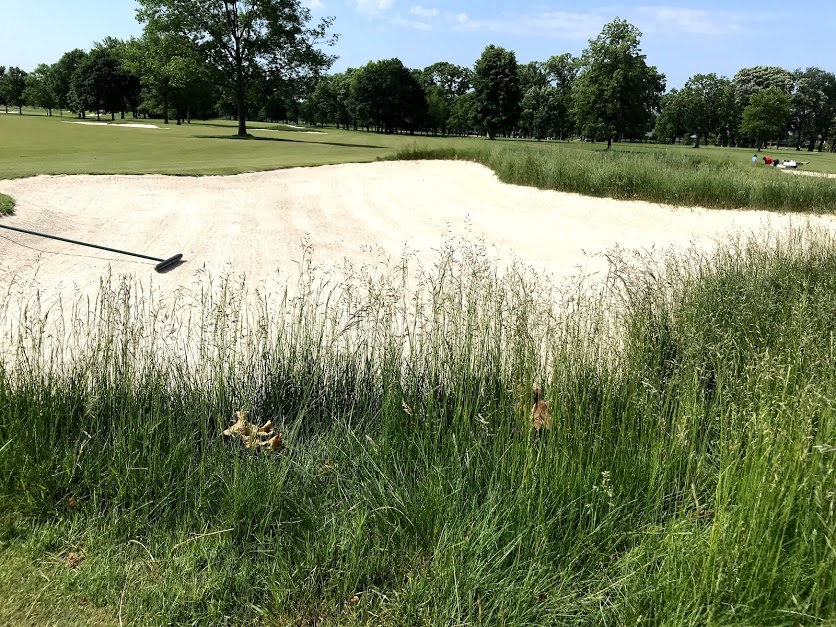
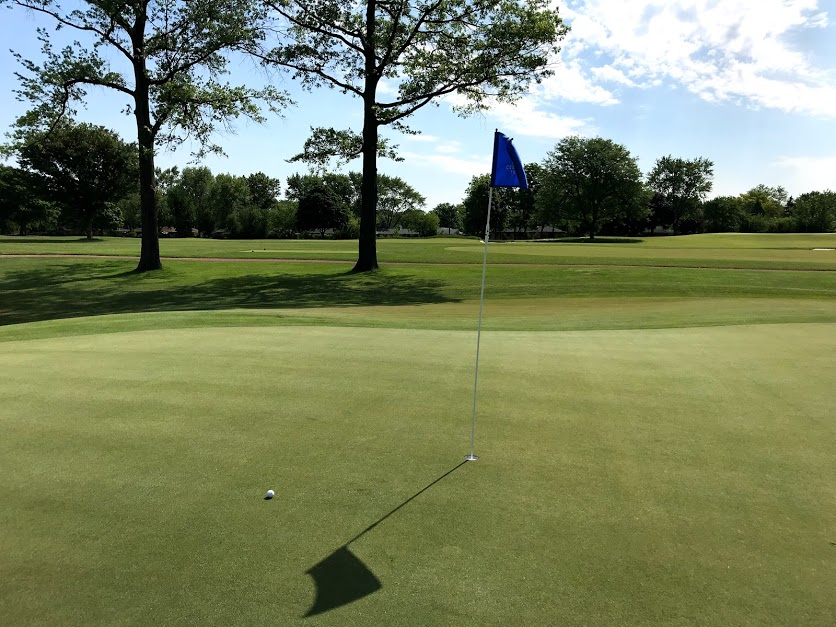
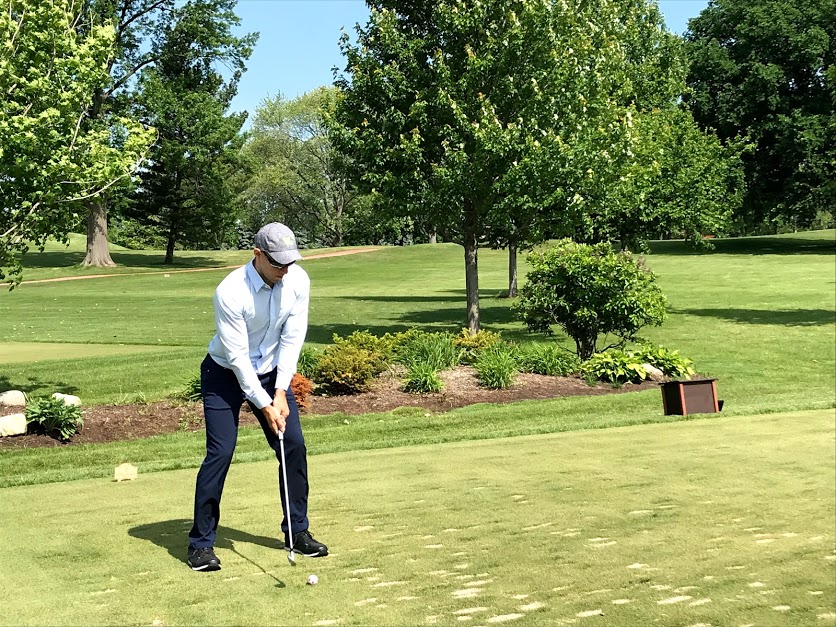
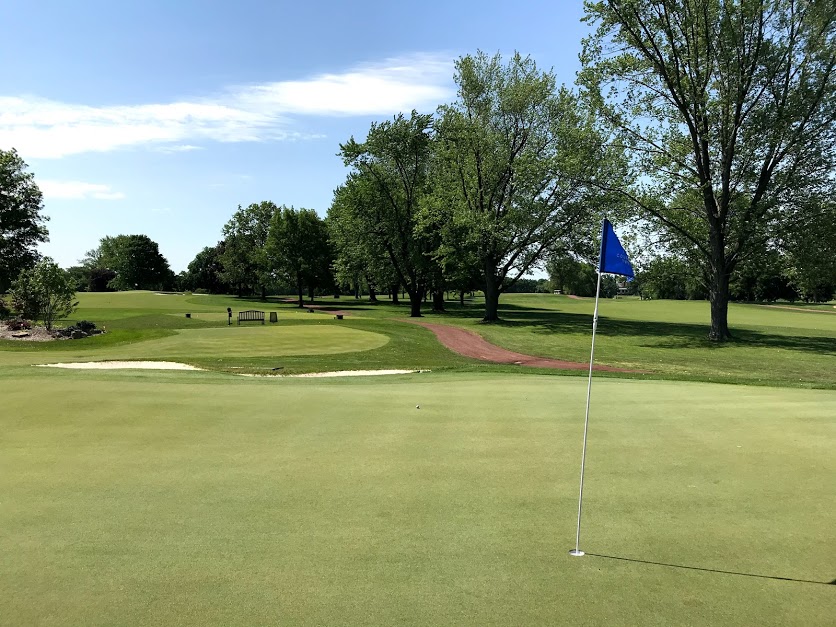

Family-Friendly Tee System
Course Two also features a unique family-friendly tee system in addition to its overall restoration. Similar to the Longleaf Tee System we've discussed in the past, the Golf For Life concept provides multiple tee marker options on every hole. Headed by Medinah's Director of Golf, Marty DeAngelo, the program allows Course Two to be played anywhere from 4600 yards to just over 6400 from the back tees.
This level of hole-to-hole versatility almost makes Course Two seem like the "Swiss Army knife" of courses, allowing players to experience completely different layouts from one day to the next depending on tee option. It is a concept that all courses would be smart to embrace, thus giving all golfers a fair shot at shooting their best score every round.
Condition and Playability
Our round took place during a cool, somewhat windy 65-degree weekday just before 9am. To say the course was in pristine condition would be underselling it. As a guy who doesn't get the chance to play pro-caliber or private courses all too often anymore, the pureness and lush parkland layout that greeted me on the first tee was jaw-dropping.
Bendelow's layout is simple, yet challenging, and doesn't hide too much from the tee. Everything is in front of you, which allows the player to form a strategy without any guess work. This allowed us to not only play faster, but with a level of comfort that we'd at least seen golf holes like this before, more or less.
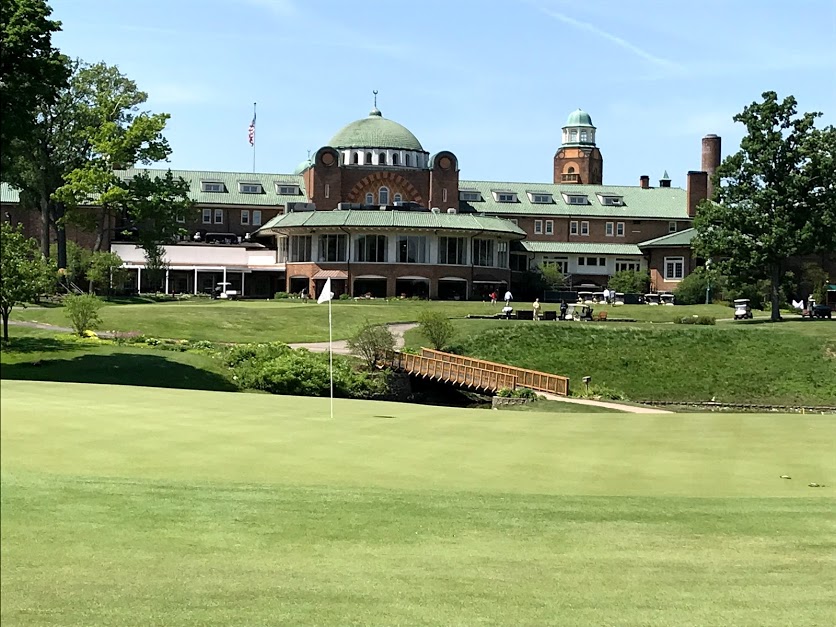
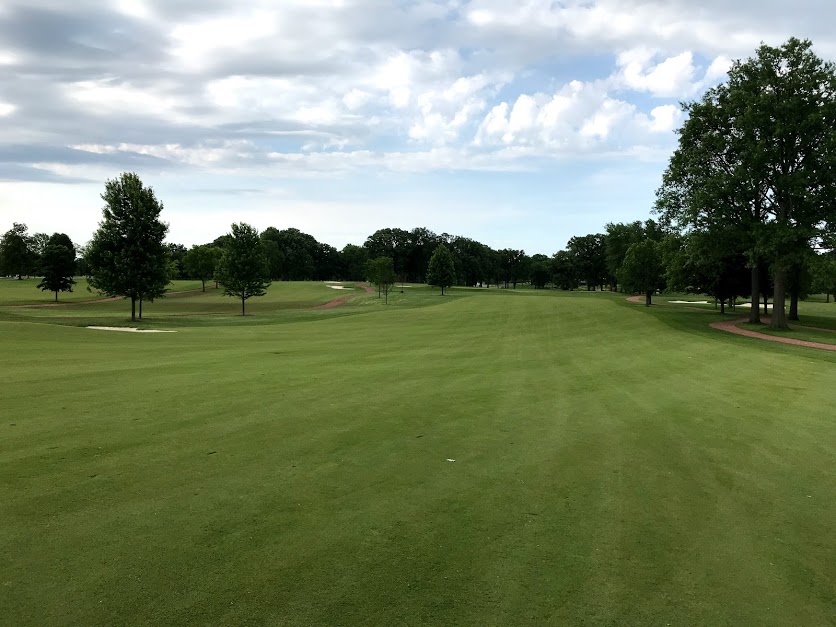
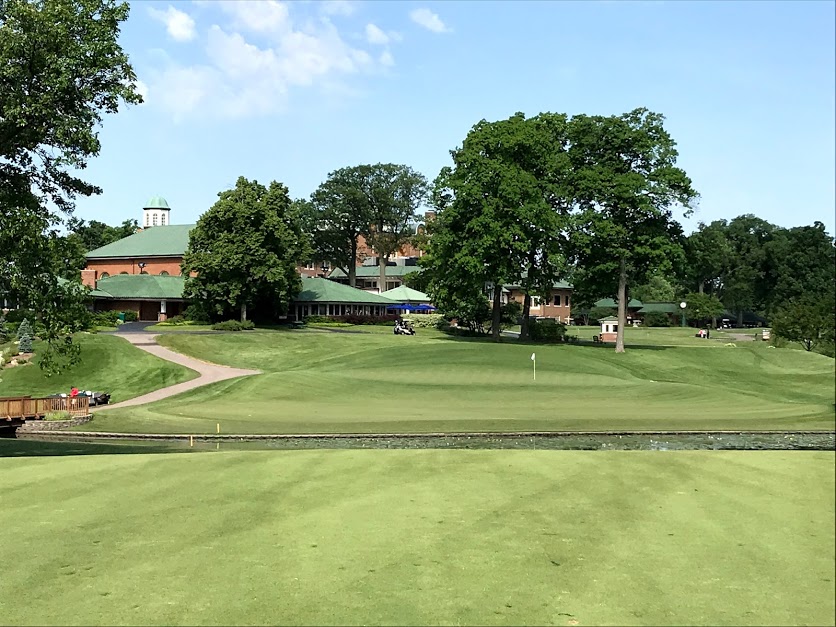

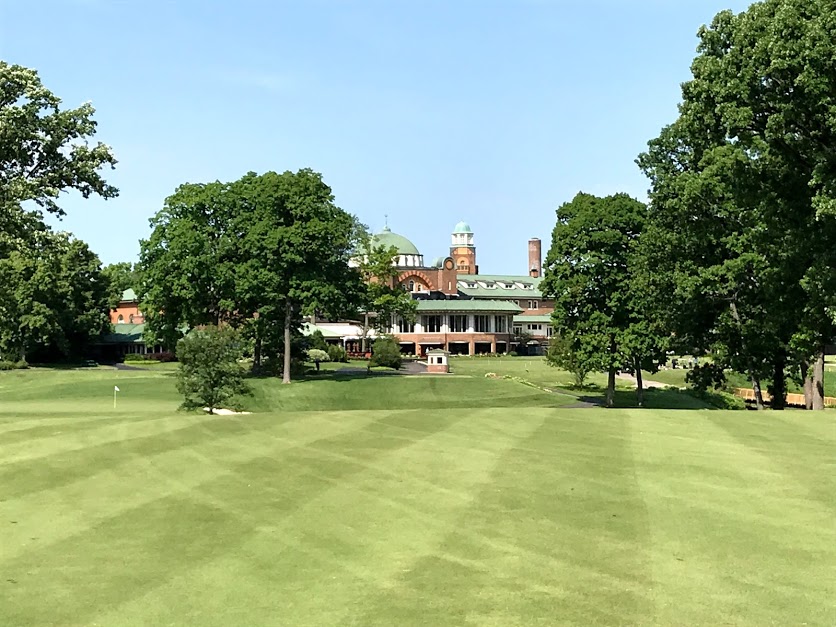
What neither of us have seen that often, of course, were the incredible greens and approach areas. Jones's restoration brought the natural contours and undulations of the greens back to life, both of which adding a level of difficulty to every hole that was both fair and fun.
Course Two's bunkering was also fair, although deceivingly punitive in some instances. I'm a huge fan of greenside bunkers that creep well onto the putting surface as opposed to stopping by the fringe. This look makes the green appear smaller from afar, yet provides comfort and confidence when chipping from the apron. Believe it or not, you actually have room to play multiple shots!
On that latter point, I was extremely impressed with the number of short game shot options Jones provides to the player. I could have putted or chipped from just off the green on any hole, which again speaks to the course's overall playability for any skill level. I prefer courses that allow me to make that choice as opposed to the other way around.
As far as the putting surfaces themselves, no word other than "perfect" could adequately describe their condition. Never before have I played on greens of their caliber, and their speeds were quick without being too fast. I honestly cannot remember a single time my ball didn't roll true on any putt, which contributed to a positive putting round overall.
Final Thoughts
The restoration of Medinah CC's Course Two has to be declared nothing less than a massive success. While the allure of playing on a piece of property like Medinah certainly gives me bias -- coupled with the fact that I simply don't get to play these courses EVER -- this was one of my favorite golf experiences ever.
If ever given the opportunity, I'd love to try more of the tee box options during a second round. The Golf For Life system -- as well as the Longleaf Tee System -- is 100 percent a way to grow this game, and Medinah should receive even more praise for embracing it for their membership.
(Many, many thanks to Matt from Plugged In Golf for the invite. I'll repay it somehow!)
Eagle Ridge Resort & Spa Review
Eagle Ridge Resort is a world away, today, and so much more. Read our review of four of the best courses in Illinois.
Is this heaven? No, it's almost Iowa.
If you are looking for a perfect golf getaway location without breaking the bank next season, Eagle Ridge Resort & Spa needs to be on your short list of considerations. Not only will you treat yourself to world-class championship golf, but the resort amenities and peaceful scenery round up one of the best golf experiences in the country. Located in Galena, Illinois – about three hours northwest of Chicago – Eagle Ridge is home to 63 holes of incredible golf strung throughout 6,800 acres of the finest Midwest scenery this side of the Mississippi River. Highlighted by The General – which is routinely ranked in the top 100 golf courses you can play in the United States – Eagle Ridge offers a unique series of challenges for golfers of any skill level.
I had the honor of playing every course at Eagle Ridge recently and can safely say it is an experience I will never forget… and for all the right reasons.
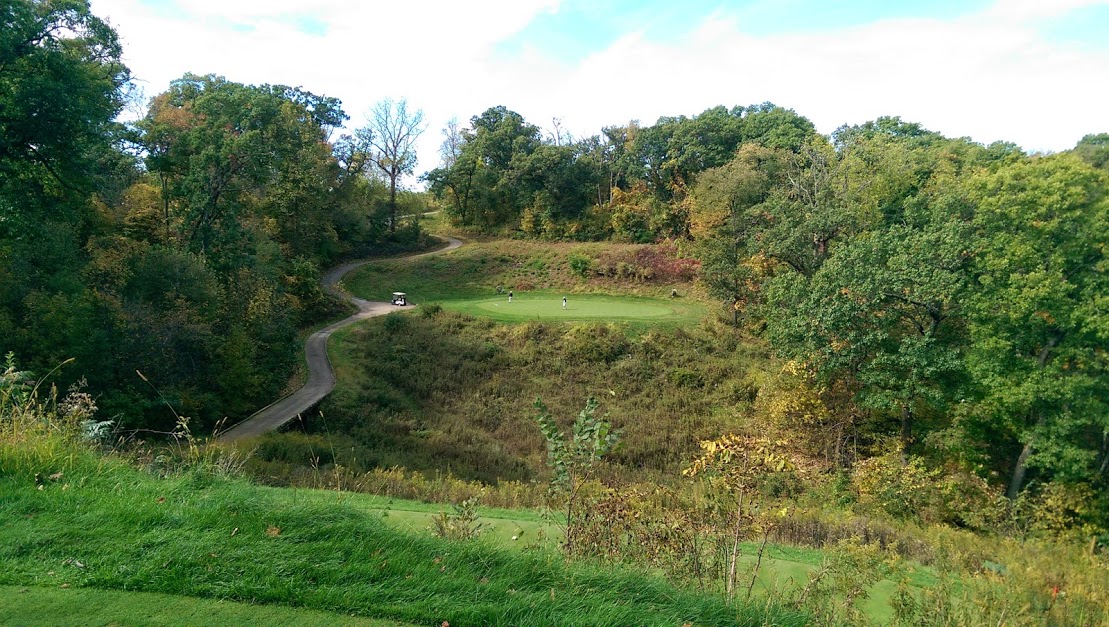



The East Course (9 Holes -- $40 incl. cart)
The East Course at Eagle Ridge is perfect for beginners and golf veterans alike, offering a manageable par-34 nine hole layout amid rolling hills and subtle elevation changes. Golfers also have the chance to try Hack Golf – the up-and-coming golf alternative that features 15-inch cups on every green – or Kick Golf, the newest “soccer-style” golf hybrid introduced in 2014 (traditional holes are also on every green). This was my first experience playing Hack Golf, and it may have been the most fun I’ve had playing nine holes in my life. I highly recommend it.
The North Course (18 holes -- $95 incl. cart)
The North Course at Eagle Ridge is reportedly the “ownership’s favorite” and it is easy to see why. The scenic views you’ll experience while weaving through the course layout is worth the price of admission alone. The signature hole is the par-3 eighth, which features a 90-foot elevation change from tee to green and requires a tee-shot over an elbow of Lake Galena. This course’s back nine holes are some of the prettiest I’ve ever played and was a highlight of the trip.
The South Course (18 holes -- $95 incl. cart)
Easily the most difficult course on the property (140 slope from the back tees), The South Course features holes that are narrower than the hallways in the clubhouse. This is a true shotmaker’s course, challenging every ounce of your mental game while tempting you on high-risk-high-reward opportunities throughout. The weather took a nasty turn to sub-40 degree temperatures during my round, adding to the difficulty without compromising an overall incredible golf experience.
The General (18 holes -- $115 incl. cart)
My final round was reserved for Eagle Ridge Resort’s flagship course: The General. Designed by Andy North and Roger B. Packard, this diamond in the Midwest features a 73.8 rating and 137 slope from the tips. The overwhelming course features are rolling hills and elevation changes, personified by the signature par-4 no. 14 hole that requires a tee shot down to a fairway more than 180 feet below the teebox. Four sets of tees make The General completely playable by any golfer, but I would reserve this course for mid-to-low handicappers.
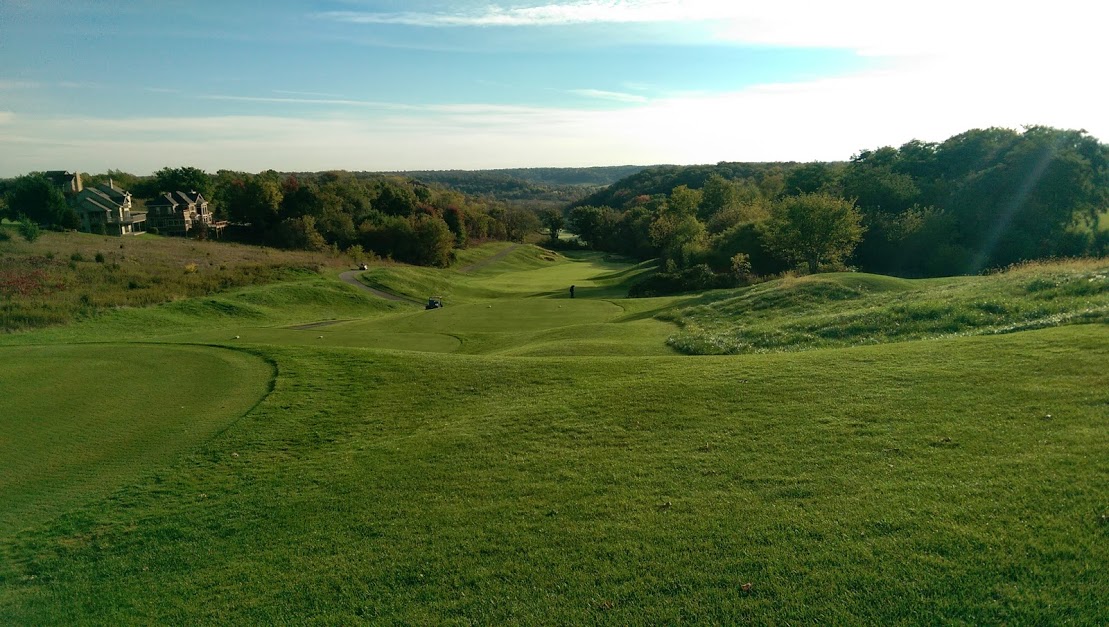
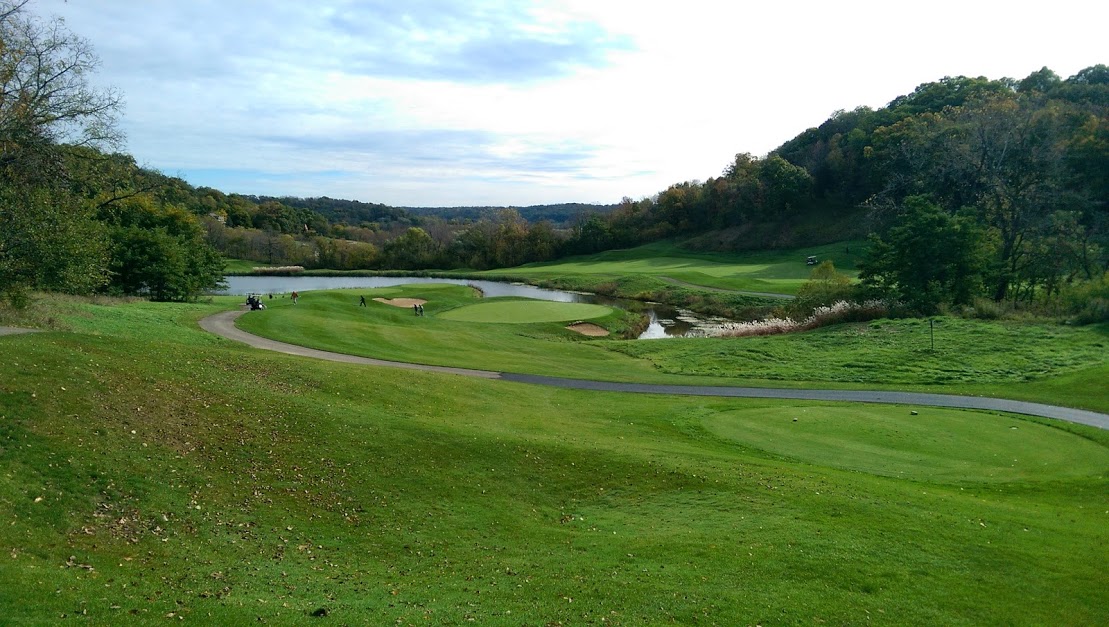
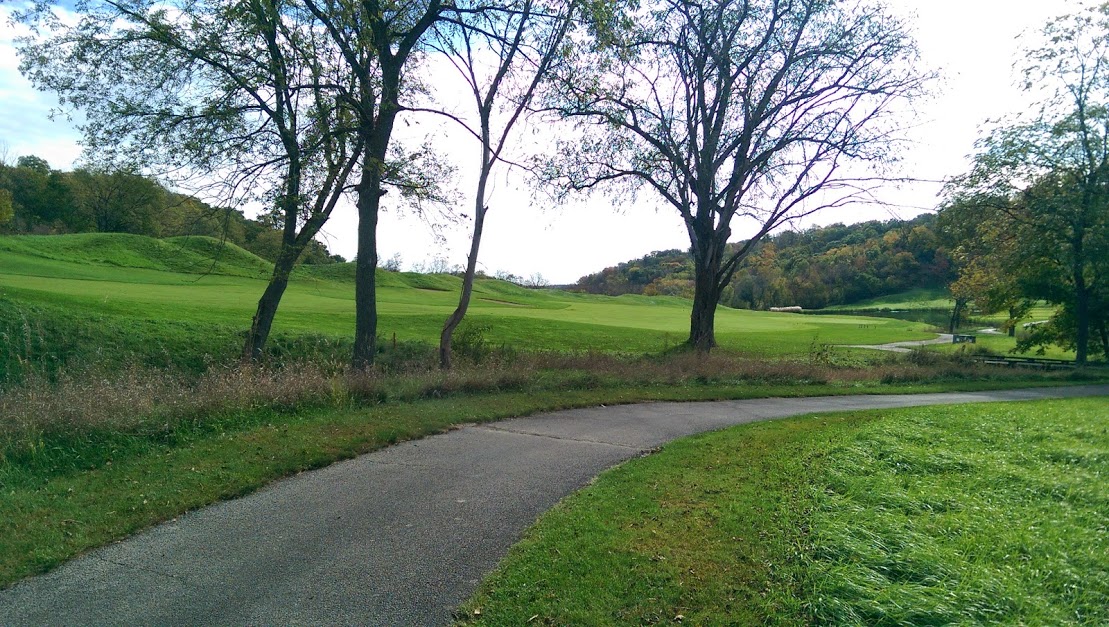

Overall, Eagle Ridge Resort & Spa is far and away the best golf resort location in the Midwest. In addition to championship golf, guests can also enjoy trail hiking, horseback riding, hot air balloon rides, award-winning spa services, fine dining and wedding reservations. Historic Downtown Galena is a short car ride away and offers unique shopping, dining and much more.
The resort’s motto is “A World Away. Today,” and it is perfectly fitting. If you are a fan of this great game, Eagle Ridge Resort & Spa needs to be on your golf bucket list; no questions asked.
Joliet Country Club: Chicagoland's Quiet Refuge
For ten years of my life I worked at Joliet Country Club, first as a caddie and later as a bag room attendant. To this day, despite all of the courses I have played in my life across the country, it is still my favorite place to play a round of golf. It may always be. Located on Spencer Road on the outskirts of Joliet, a suburb about 30 miles south of Chicago, Joliet Country Club is nestled among a railway, farmland and one of the roughest parts of the city. Once comprised of a full-service private country club complete with tennis courts, swimming pools and a strong caddie program, JCC now struggles to maintain its status as the only private club in the area.
The tennis courts are long gone. The caddies have been replaced by electric golf carts. A massive clubhouse sits where the 18th tee once stood, punctuating a long driveway that begins from the road and covers the old finishing hole. In a way, the landscape reminds those of us who remember the "old club" of a time when that same parking lot was always full and membership was booming. Years later and due to economic struggles both local and nationwide, Joliet Country Club almost appears forgotten.
I've always had strong emotional ties to this course. I literally grew up on its grounds, both as a person and as a fan of golf. In some ways my career as a golf writer started here when my opinions where shared more often with my friends instead of on a computer screen. I once wrote a book about my experiences at the course; a book only a handful of folks read. Perhaps it is better that way. Perhaps those stories are better left in the hearts and minds of those who still treasure them.
Doug Bauer is the head professional at JCC, and you will be hard pressed to find a better professional in any industry. He served as more than just my boss for a decade; he and his assistants became friends and mentors whom I still cherish to this day, albeit from a distance.
Adam Tatro, one of the best friends you could hope to have, is the current Assistant Pro. Like me, Tatro grew up on the fairways of JCC and learned most of what he knows about the golf industry there. His knowledge of the game is only surpassed by his talent, and to this day I believe he still owns the course record (66 -- twice).
What I found most appealing about JCC was the number of members from cities other than Joliet. It almost seemed like these folks and their families would drive from towns like Hinsdale, Chicago, Orland Park and others to get away from life. The seclusion offered by the course's surrounding treelines and hills must be comforting to those lucky enough to experience it.
I am saddened to see how Joliet Country Club's membership has dipped over the years because it is, by far, the best golf course in the city. Both challenging for the better player and welcoming to the novice, the course offers three sets of tees on a layout that includes immaculate fairways, fast greens and a character unique to the area. People are missing out.
I will forever cherish my experiences at Joliet Country Club and can hope that one day, hopefully in the near future, I will join their membership with my family. It is a hell of a place to teach your children how to play golf.
Golf Confessionals: St. Andrews Golf and Country Club
St. Andrews Golf and Country Club -- located on Route 59 in West Chicago -- has been a challenging golf course offering to Chicago's western burbs since 1926. Built as a nod to the world famous Scotland course bearing the same name, St. Andrews offers two challenging 18-hole courses and one of the best practice facilities in the Midwest. Course No. 1 -- also nicknamed the 'St. Andrews Course' -- was designed by John McGregor of the Chicago Golf Club in 1926. The opening hole is a quaint par-4 with a slight dogleg to the left. Better players will hit a long iron or fairway wood off the tee as it only measures roughly 351 yards from the championship tees. Don't let this opening hole fool you; this course reaches nearly 7,000 yards from the tips and can be quite challenging overall. This course features a 71.8 rating and a 124 slope from the back.
Course No. 2 -- nicknamed the 'Joe Jemsek Course' -- is another challenging track that can be played up to 6,800 yards from the back tees. Like the St. Andrews course, the opening hole on Jemsek is a short par-4 that offers the golfer hope right from the start. Massive hills and undulating greens await you from that point on, which can become quite challenging when the greenskeepers decide to place the hole location on a slope or mere paces off the fringe. This course features a 72.0 rating and 122 slope from the championship tees.
Between the two courses, I preferred the Jemsek course due to its scenic holes and overall playability. I did not particularly care for the dogleg-ridden St. Andrews course, but that is more a matter of personal preference than anything else. The Jemsek course is pretty straightforward and every hole is right in front of you; there are very few surprises and the course just dares you to play well.
However, one downside to the 36-hole layout is how many of the holes seem crammed together throughout the property. There are multiple locations on the course where you can see five or six different greens or tee boxes at a time, which can be downright dangerous when you consider wayward tee shots from neighboring golfers. You will want to keep you head on a swivel playing this track.
The gem of St. Andrews G&CC, in my opinion, is their practice center. With over 80 grass tees spread out over 36-acres of land, this range is one of the largest I have ever seen. The range balls are of a high quality (no cracks or scuffs), the putting green is large and can accommodate multiple players and the range even features flood lighting for evening practice sessions. You will be hard pressed to find a better range anywhere in the Midwest.
To learn more about St. Andrews Golf and Country Club, including rates and directions to the course, visit their website by clicking this link.
REVIEW: Cantigny Golf
This past weekend I celebrated my 31st birthday by playing Cantigny Golf in Wheaton, IL., which is located about 35 miles west of Chicago. While I have played many top courses in the area, I never had the chance to get out to Cantigny despite having lived down the street for almost 10 years. According to the course website, Cantigny is the former estate of Colonel Robert R. McCormick. McCormick was the long time editor and publisher of the Chicago Tribune and played a major role in American journalism during the first half of the 20th century. He built the Tribune company from a single newspaper into a major media organization of newspapers, radio, television and newsprint operations.
McCormick later inherited a massive piece of land formerly known as Red Oaks Farm from his mother, a member of the prestigious Illinois Medill family. McCormick chose to name the land Cantigny in recognition of the small French village that was the location of the first American victory during World War I.
In his will, as the website states, McCormick instructed that his estate be used only for philanthropic purposes. In addition to 27 holes of championship golf, Cantigny is also the home of a series of lavish floral gardens and the home base of The McCormick Foundation.
Consisting of three 9-hole courses -- Woodside, Lakeside and Hillside -- Cantigny's golf courses are each unique in their design and challenging in their respective layouts. On this particular day my group played the Hillside-Woodside layout.
Cantigny Golf also boasts a phenomenal caddie program that has to be one of the best in the country. There are over 150 caddies on the roster at any time, all of which striving for a chance at earning the Evans Scholarship. My caddie's name was Jon, and he was incredibly talented and informative throughout the round.
The course itself was a marvel of golf architecture the likes I have not seen around my area, including any of the four offerings at Cog Hill or Ruffled Feathers. Hillside featured rolling hills (hence the course name) and large greens while Woodside was carved out of Cantigny's forest and numerous creeks. The landscape for each nine-hole course was simply stunning and well worth the $95 price tag.
In addition to three fantastic courses, Cantigny also features a large Golf Academy and practice center. Readers of this blog or my work on the Back9Network will know that I have worked with a teaching professional at this practice facility for most of the year. While I have not taken lessons at other courses in the past, I would be hard pressed to find a better group of instructors than what is offered at Cantigny.
For more information on Cantigny Golf, be sure to visit the course website at www.cantignygolf.com.
REVIEW: Mill Creek Golf Club
Mill Creek Golf Club is one of Chicagoland's best value golf courses. Click here to read our firsthand review of this awesome course.
This season, my last full round of golf took place at Mill Creek Golf Club in Geneva, Illinois. Located just outside Aurora's limits, Mill Creek is a pleasant community that offers a challenging yet fun golf experience for players of any ability. I had not played the course prior to this season, but after having my initial experience I am sure to return in the near future. This 18 hole facility is not only known for its golf course, but also its golf academy. The main golf course has multiple tees on every hole, allowing you to choose the appropriate length for your group to play from. Wildflowers are abundant throughout the facility, adding to the beauty of the course. The elevated tees on many of the holes give players spectacular views of The Fox Valley.
The practice facility has over 58,000 square feet of bentgrass teeing areas, and the range has five target greens from which to choose. There are multiple putting greens as well as fairway and greenside bunkers to practice your short game. The Mill Creek Golf Academy has instructors available every day to assist you and your guests in every aspect of the game.
What I enjoyed most about Mill Creek was its variety of golf hole layouts. At many courses in the Chicago area, what you see is what you get; there are few surprises offered by course architects on most public courses. This is not the case with Mill Creek.
It is truly evident that the surrounding neighborhood homes and condos were in place prior to a golf course being built. Therefore, Mill Creek Golf Club was actually built after the many housing units instead of the other way around. This unique feature makes for some interesting golf shots, especially when having to work your shots away from private yards and out-of-bound markers that come very much into play. At times, the white stakes appear just inches from the fairway.
This characteristic may not be appealing to some players, but I felt it gave Mill Creek a unique charm that I can't find at many other courses in the area.
Overall, I very much enjoyed my round at Mill Creek despite not playing the best that morning. If you are looking for a well-manicured, challenging (yet fun) course in the West Burbs, check out this gem next season.







